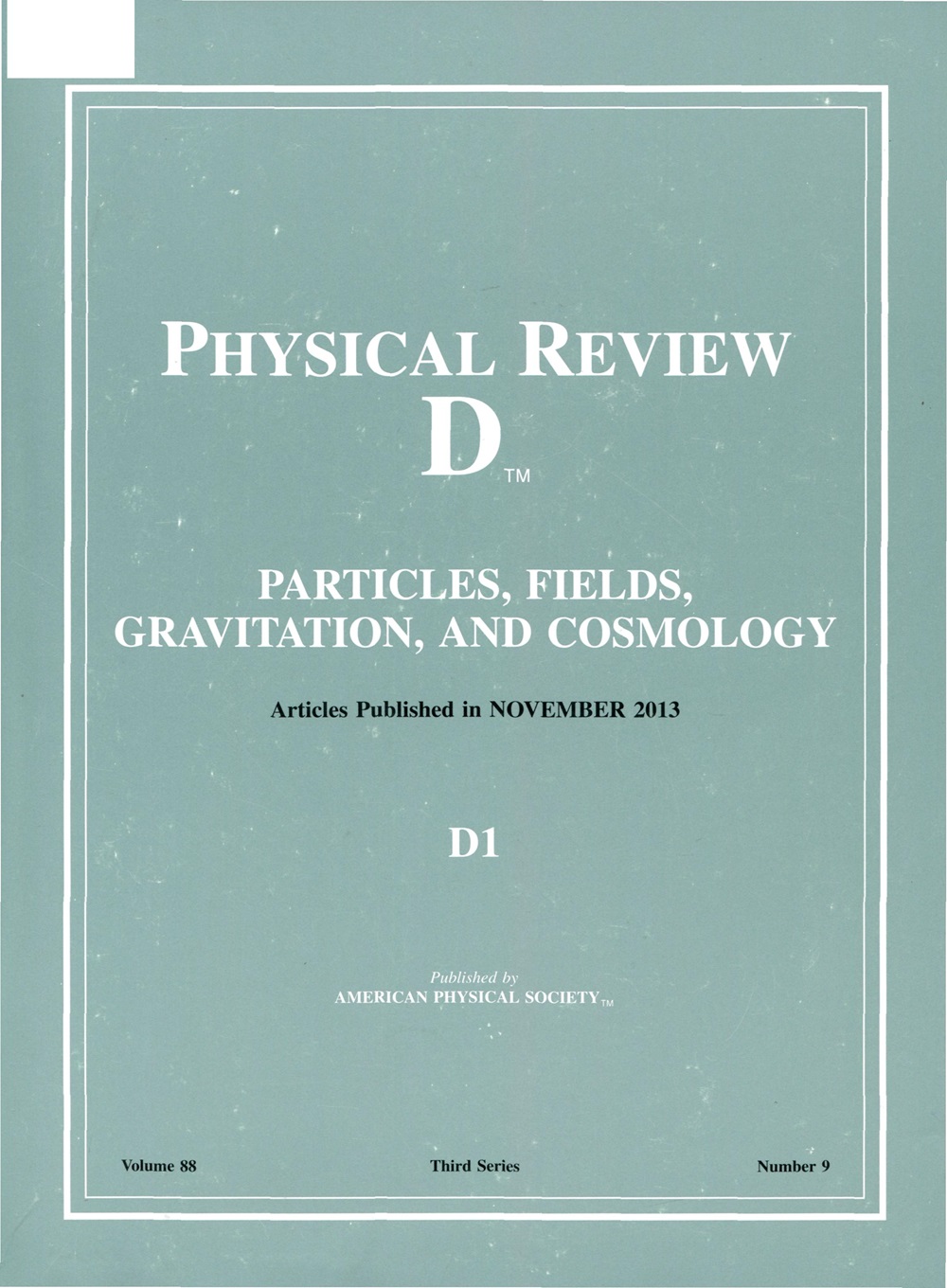LHC and HL-LHC bounds on visible and invisible Z′ decays in the B−L model
IF 5
2区 物理与天体物理
Q1 Physics and Astronomy
引用次数: 0
Abstract
In this work, we use published results by the ATLAS Collaboration collected at LHC Run 2 at a center-of-mass energy of s=13TeV with an integrated luminosity ofLHC和HL-LHC在B−L模型中可见和不可见Z '衰变的界
在这项工作中,我们利用ATLAS协作小组在LHC Run 2上收集的已发表的结果,在质心能量为s=13TeV,综合光度为139 fb−1的情况下,推导出与B−L规范对称相关的Z '规范玻色子的低质量极限。利用双轻子数据,我们发现在不存在不可见衰变的情况下,当gB−L=0.1 (gB−L=0.5)时,MZ ' >4 TeV (6 TeV)。一旦开启了不可见的衰变,这些限制就会大大放宽。假设不可见分支比BRinv=0.9,当gB−L=0.5时,LHC束缚被松弛到MZ ' >4.8 TeV。这一分析证实,大型强子对撞机能够施加比LEP实验建立的边界更严格的约束。我们还估计了预计的高亮度LHC的边界为s=14 TeV,计划的综合亮度为L=3 ab−1,将探测到Z的质量高达7.5 TeV。2025年由美国物理学会出版
本文章由计算机程序翻译,如有差异,请以英文原文为准。
求助全文
约1分钟内获得全文
求助全文
来源期刊

Physical Review D
物理-天文与天体物理
CiteScore
9.20
自引率
36.00%
发文量
0
审稿时长
2 months
期刊介绍:
Physical Review D (PRD) is a leading journal in elementary particle physics, field theory, gravitation, and cosmology and is one of the top-cited journals in high-energy physics.
PRD covers experimental and theoretical results in all aspects of particle physics, field theory, gravitation and cosmology, including:
Particle physics experiments,
Electroweak interactions,
Strong interactions,
Lattice field theories, lattice QCD,
Beyond the standard model physics,
Phenomenological aspects of field theory, general methods,
Gravity, cosmology, cosmic rays,
Astrophysics and astroparticle physics,
General relativity,
Formal aspects of field theory, field theory in curved space,
String theory, quantum gravity, gauge/gravity duality.
 求助内容:
求助内容: 应助结果提醒方式:
应助结果提醒方式:


